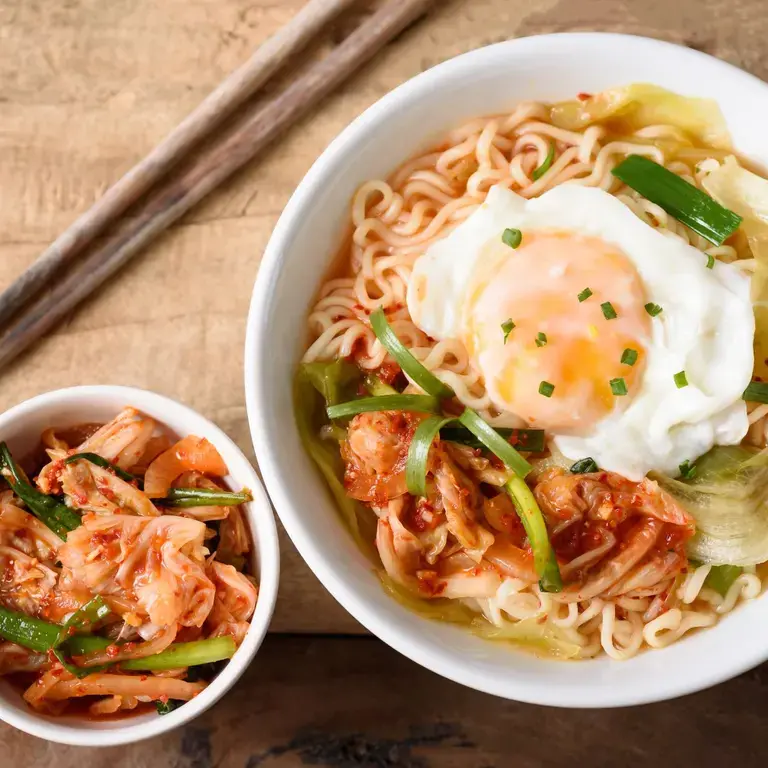Ramyeon is one of South Korea’s favourite comfort foods, with the average person consuming an impressive 80 to 90 packets every year. It is made up of dried, curly noodles, freeze-dried vegetables and a sachet of powdered soup, and is rehydrated in boiling water to make a quick, tasty meal. It comes in a variety of flavours, and can be eaten by itself or with added toppings.
Invented in the 1960s by Korean businessman Jean Jon-Yeon, Ramyeon was intended as a quick and convenient way to feed people in times of hardship after the Korean War, with the original packets retailing at the equivalent of 1 cent. Jon-Yeon was inspired to develop ramyeon after discovering instant ramen during a visit to Japan, but while the flash-fry method of drying the noodles is the same, the flavours are different, with ramyeon noticeably spicier than ramen.
Korean culture in general has been making its mark on the west in recent years, with K-pop and K-dramas both having a growing following in the US, and the interest in all things Korean was given a boost in 2020 thanks to best picture winning film Parasite. Sales of ramyeon noodles skyrocketed, and more stores are stocking them as a result. If you want to grab yourself a packet or two, try your local Asian store, or even a regular store, and try to track down genuine Korean noodles, as these tend to be more flavourful. You may see them labelled as ‘ramyeon’ or ‘ramyun,’ and with the Korean characters ‘라면’.
Varieties of ramyeon
There are many different types of ramyeon, but the examples below are a taster of what you can expect.
Kimchi ramyeon is seasoned with real fried pieces of kimchi for a tangy, spicy, unmistakably Korean flavour.
Shin Ramyun is a cult favourite with a spicy, beef-flavoured broth. At 2,700 Scoville Heat Units (SHU), it’s pretty fiery, but by no means the spiciest ramyeon available.
Kkokkomyeon is made using a white chicken-flavoured broth.
Jjapaghetti is an instant version of jjajangmyeon, or noodles in black bean sauce. It was featured in the film Parasite, leading to a boom in sales.
How to cook ramyeon
If you want to keep things simple, cooking ramyeon is as easy as adding hot water, but for an extra-tasty dish, try adding some toppings.













